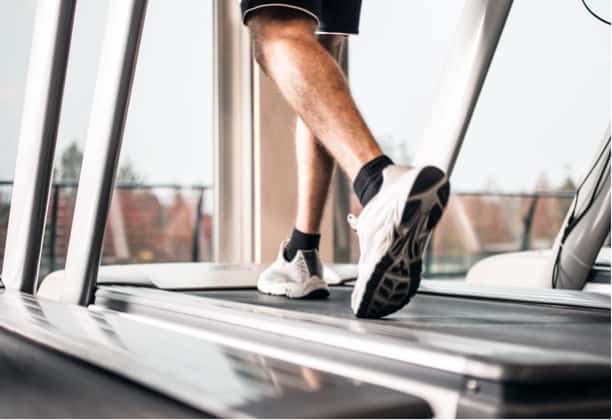No pain, no gain in exercise for peripheral artery disease
Northwestern University | 04-06-2021

No pain means no gain when it comes to reaping exercise benefits for people with peripheral artery disease (PAD), reports a new Northwestern Medicine study.
In people with peripheral artery disease, walking for exercise at an intensity that induces ischemic leg pain (caused by restricted blood flow) improves walking performance — distance and length of time walking — the study found. Walking at a slow pace that does not induce ischemic leg symptoms is no more effective than no exercise at all, the study showed.
This randomized trial is the first to show that a home-based walking exercise program improved walking ability in people with peripheral artery disease when exercise was conducted at a high intensity that induced ischemic leg symptoms but not when the exercise was conducted at a low intensity without ischemic leg symptoms.
“We’ve shown you have to walk to elicit ischemic leg pain to reap the benefits,” said lead investigator Dr. Mary McDermott, professor of medicine at Northwestern University Feinberg School of Medicine. “It will lessen over time, and most people eventually will be able to walk further without discomfort.”
The study was published in JAMA April 6, 2021.
McDermott’s previous research suggested that pain during exercise prevented many people with PAD from walking.
While the trial did not identify the biological changes that lead to walking improvement, McDermott said prior research shows intensive exercise stimulates certain biologic pathways that promote improved mitochondrial activity, the cell’s chemical energy source.
“Perhaps for people with PAD, the exercise promotes growth of new small blood vessels to their muscles,” McDermott said.
About 8.5 million in the United States and about 250 million people worldwide have lower extremity peripheral artery disease (PAD). People with PAD have blockages in their arteries that slow or stop the blood flood flow to their legs. As a result, they have pain and difficulty walking even short distances. It is comparable to angina for people who have symptomatic heart disease. Few therapies exist to treat it.
The first month consisted of weekly in-person visits with the coach. These sessions helped the participants to learn the difference between walking at high versus low intensity, allowed them to learn to use the technology used to monitor their exercise intensity at home and helped them get started with their exercise activity. The program then consisted of telephone calls and remote monitoring by a coach.
The remote monitoring aspect is important, McDermott said. Although supervised exercise is covered by Medicare and other insurance companies, most people with PAD do not participate in supervised exercise because of the burden associated with traveling three times weekly to the medical center for participation.
For the study, 305 people with peripheral artery disease at four medical centers were randomized to high-intensity exercise, low-intensity exercise or a control group that got telephone calls that were not about exercise. Those randomized to an exercise intervention were asked to walk up to 50 minutes per session, five days a week. Those in high intensity were asked to walk at a pace that was fast enough to elicit ischemic leg symptoms during exercise. Those randomized to low intensity were asked to walk at a comfortable pace that did not induce ischemic leg symptoms.
Intensity was monitored remotely using an ActiGraph activity monitor that participants wore during exercise. These data were uploaded to the study website and viewed by study coaches. The six-minute walk, treadmill testing and patient-reported outcomes were measured at baseline and at 12-month follow-up.
Patients who participated in high-intensity walking exercise significantly improved the distance they could walk in six minutes compared to either the low-intensity group or the control group. The high-intensity exercise group also significantly improved the length of time they could walk on the treadmill at the end of the study, compared to each of the other two groups.
“Patients with PAD should be advised to walk for exercise at a pace that induces ischemic leg symptoms in order to get a benefit,” McDermott said. “Exercise is the most effective non-invasive therapy to improve walking in people with PAD.”
The next step in the research is to determine the biologic explanation for the finding that ischemia of the lower extremities appears necessary to gain benefit from walking exercise in people with PAD.
Source:
Materials provided by Northwestern University. Content may be edited for clarity, style, and length.
